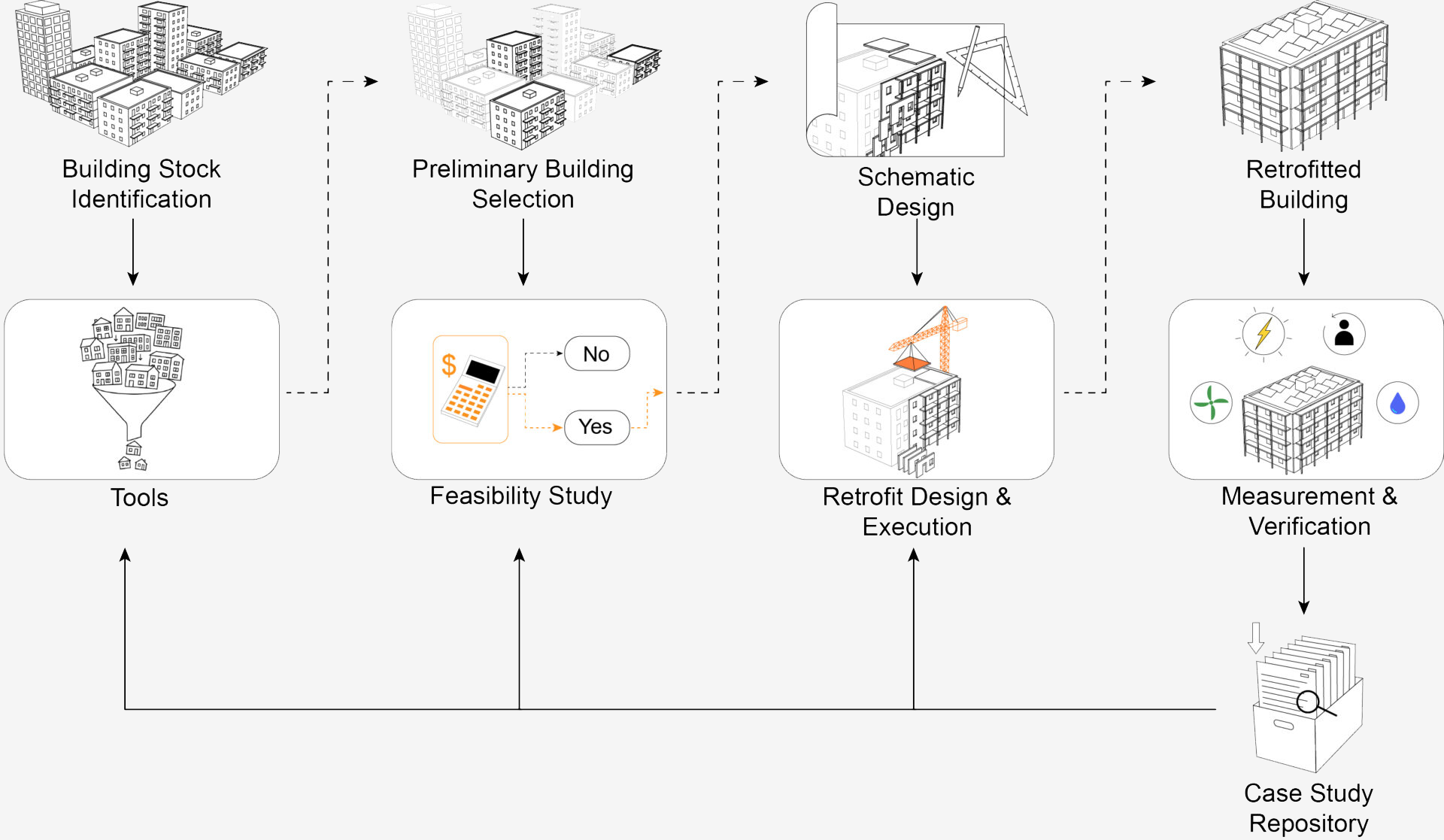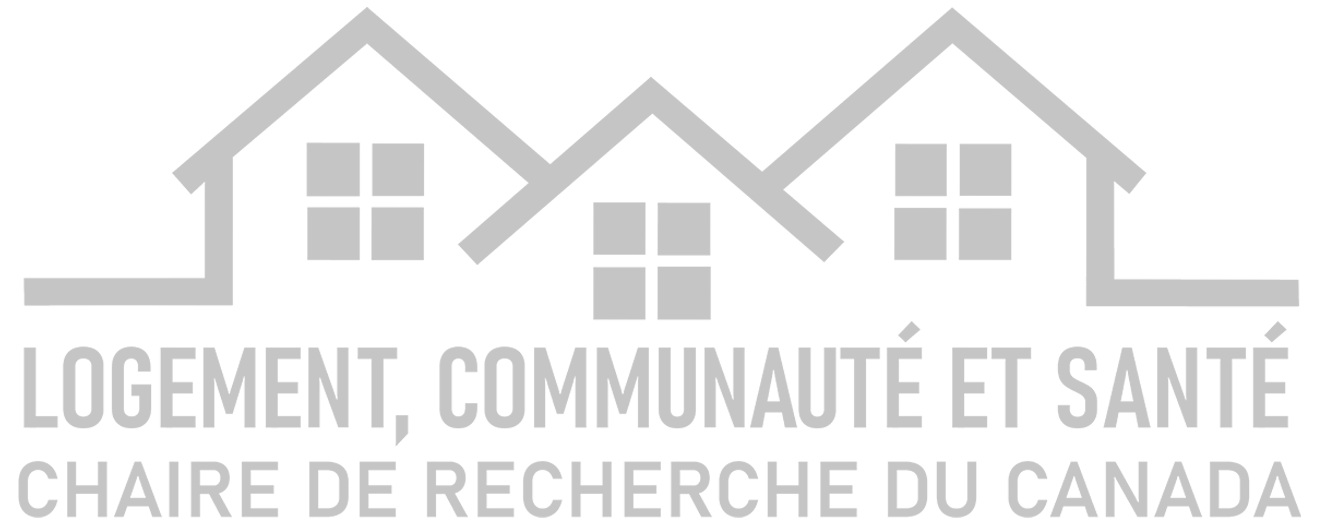Retrofit Decision Support Toolkit

A toolkit to help building portfolio owners, managers identify and prioritize high-impact, high-feasibility retrofits and identify optimal energy conservation measures.
Motivation
It is urgent to decarbonize and upgrade the existing building stock, but many barriers to widespread deep retrofits persist.
Barriers to widespread deployment of deep energy retrofits (DERs) include:
- Limited data. 1. Few DER projects have been completed in Canada to date, so there is little benchmarking and performance data. Tools must therefore function without historical references. 2. Data on existing buildings is sparse and often incomplete, so tools must work despite information gaps
- Costly feasibility studies. In the past, buildings have been selected to undergo feasibility assessments based on intuition and unstated assumptions, leading to costly studies that often concluded that a DER project was not viable.
- A challenging value proposition. Building a value case for investing in DERs is challenging, especially in Quebec, where electricity is low-cost and low-carbon, and requires that benefits beyond energy savings (“non-energy benefits'') be accounted for.
Tools are needed to allow decision-makers in the pre-development phase to quickly and cheaply conduct an initial coarse assessment of the feasibility, costs and benefits of DERs for a set of buildings. Candidate buildings judged to have a higher feasibility and sufficiently high benefits relative to barriers and costs can then be prioritized to undergo detailed FEED (Front-End Engineering Design) evaluations.
Our approach
We are developing an initial set of tools to help identify high-impact, high-feasibility retrofit candidates.
The toolkit will help stakeholders assess the potential of buildings for early adoption DERs using a structured, data-driven methodology. It includes algorithms to fill critical data gaps in a strategic and transparent way when needed. Data and input parameters can be easily updated as context and data availability evolve.
The tools are being developed by a multidisciplinary team of designers, engineers, software developers and researchers,in collaboration with community housing providers, NGOs, builders and AEC industry professionals. We test and refine the tool using real data from regional social housing stocks to ensure the tool reflects realities on the ground.

The toolkit within the larger DER workflow, from stock to execution
Where we are now
Existing tools and their status
We've built several tools that we are working to bring to the level of "minimum viable product". These serve to collect and aggregate data about a given building stock, to perform coarse cost and emissions estimates, and then to methodically evaluate the resulting datasets with user input to support decision-making.
Data collection & aggregation tools
Developed by the Carleton Immersive Media Studio (CIMS), Canada's Digital Twin aggregates open-source data to build a comprehensive map of Canada’s building stock. It identifies high-potential sub-stocks and will serve as a centralized repository for our analytical outputs.
BIT fills data gaps not captured by the Digital Twin. It connects users directly to Google Earth and Streetview, allowing them to virtually “walk around” buildings and complete structured surveys—enabling a form of crowd-sourced building data collection.
We are exploring machine learning and urban building energy modeling (UBEM) for larger portfolios where manual data input is impractical. The intent is to automatically extract building characteristics from platforms such as Google Maps and Street View.
Estimation Tools
Provides rough order-of-magnitude (ROM) cost estimates to support early-stage portfolio screening and compare relative costs for buildings within a portfolio.
Based on life cycle assessment (LCA) principles, this tool estimates both operational emissions savings and embodied emissions of potential retrofit projects. Like the cost estimator, it offers a relative comparison between buildings to support project prioritization.
Decision support
Building characteristics and outputs from the analytical tools feed into a Multi-Criteria Decision Analysis (MCDA) framework. The web application generates a “Measure of Effectiveness” score for each building—reflecting the overall benefit and feasibility of potential retrofits based on user-defined priorities.
What's next
- Consolidate tools into one web application and launch a beta public-facing version to gather user feedback.
- Expand evaluation domains to include health and well-being, climate resilience, and densification potential, ensuring retrofit decisions account for a broader set of co-benefits.
- Enhance life cycle cost modeling by integrating facility condition assessments and moving toward a dynamic Total Cost of Building Ownership (TCBO).
- Partner with new stakeholders including municipalities, housing providers, and developers to test and adapt our tools across diverse geographies, building types, and retrofit goals.

Our pilot projects
The Île-Bizard-Sainte-Geneviève Community Centre
Discover our pilot projectThe Île-Bizard Community Centre, which plays a crucial role as both a neighborhood hub and an emergency shelter, is the focus of a pilot project aimed at a holistic upgrade to its energy performance

Discover Our Collaborators








- Arrondissement de l’Île-Bizard—Sainte-Geneviève
- Société d’habitation du Québec
- Building decarbonization alliance
- Pembina institute
- Québec BVI – Bâtiment vert et intelligent
- ReCover Initiative
- Retrofit Canada
- The Atmospheric Fund (TAF)
- Transition Accelerator
- Zero Emissions Innovation Centre
- If Then Architecture Inc.
- Minotair Inc.
- RG Solutions
